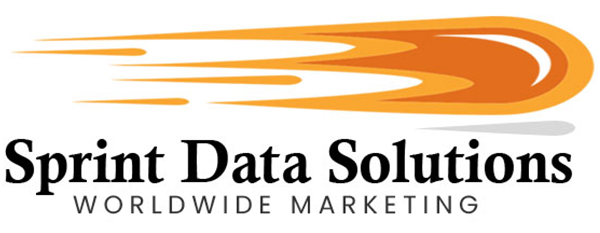Insurance Becomes More Important In Times Of Volatility
The concept of insurance has long stood as a pillar of prudent financial planning, encapsulating the age-old wisdom: “It’s better to have it and not need it than need it and not have it.” Life is inherently unpredictable, and whether it’s a personal mishap or a business-related incident, the financial consequences of unforeseen events can be staggering. Without adequate resources on hand, recovery from accidents—be they medical emergencies, property damage, or liability claims—can be devastating. This is where insurance serves its critical function. In return for a relatively manageable recurring payment—typically monthly premiums—policyholders gain access to substantial financial support when a covered event occurs. This transformation of consistent small contributions into potentially life-saving payouts is the essence of risk pooling and shared responsibility.
In many areas of life, insurance isn’t just advisable; it’s legally mandatory. In the United States, for instance, virtually every state requires drivers to carry a minimum level of auto insurance before hitting the road. This ensures that financial responsibility for accidents is not evaded, protecting both individuals and society from the cascading effects of unpaid liabilities. Similarly, businesses may be required to carry workers’ compensation, general liability, or professional indemnity insurance depending on their field and jurisdiction.
Despite its importance, insurance is often misunderstood or underappreciated—seen more as a necessary expense than a proactive safeguard. This sentiment mirrors how many people approach health: like eating vegetables, they acknowledge its value but rarely engage with the details. This general lack of engagement is where strategic education and marketing come into play. Consumers and even business leaders may be unaware of how policy structures differ—what is covered, what isn’t, deductible thresholds, exclusions, or benefit caps. Clear, empathetic, and informative marketing campaigns can illuminate these nuances, fostering more informed decisions. For instance, highlighting the hidden drawbacks in current coverage or demonstrating how newer policies offer better value or protection can prompt individuals and organizations to reassess their insurance needs.
Ultimately, insurance isn’t just about compliance or ticking a box—it’s about resilience. It’s a financial safety net that turns uncertainty into something manageable, ensuring that when misfortune strikes, the focus can remain on recovery rather than ruin.

Who Benefits?
There is a broad range of insurance products available that can be strategically tailored to meet the diverse needs of both individual consumers and businesses across the United States. By analyzing demographic trends, regional risks, and industry-specific challenges, insurance providers can more effectively target their offerings. For example, in densely populated urban areas, there is an increased demand for renters and auto insurance due to high mobility and limited home ownership. In contrast, rural communities may require greater emphasis on agricultural insurance, including crop and livestock protection. Businesses, on the other hand, can benefit from specialized policies such as cyber liability insurance for tech companies, professional liability for legal and medical practices, and commercial property insurance for manufacturers and retailers. Moreover, with the growing gig economy, there’s an emerging market for flexible and affordable coverage options for freelancers and independent contractors. By identifying these niche segments and adapting products to align with their unique risks and lifestyles, insurers can not only increase their market share but also build stronger relationships with their clients.
Health Insurance
Health insurance remains one of the most pressing concerns for many Americans. Despite the United States being a leader in medical innovation—with world-class hospitals, cutting-edge treatments, and pioneering research—access to this level of care often comes with an extraordinarily high price tag. For millions of individuals, especially those who are self-employed, underemployed, or working part-time without benefits, the financial burden of medical emergencies or chronic conditions can be overwhelming. In worst-case scenarios, the absence of adequate insurance can lead to lifelong debt, bankruptcy, or the inability to receive critical care altogether.
This ongoing struggle has created a widespread demand for more accessible and affordable health insurance solutions. While the Affordable Care Act (ACA) has played a pivotal role in expanding coverage to millions, it still falls short for many due to high premiums, limited provider networks, or complex qualification processes. As healthcare costs continue to rise, Americans remain deeply concerned about how to protect themselves and their families without breaking the bank. Consequently, anyone capable of offering viable, cost-effective alternatives to traditional health insurance is likely to receive significant attention and interest, especially in a climate where healthcare affordability is both a personal and national priority.
Medicare Part B
As a crucial complement to traditional health insurance, Medicare Part B plays a vital role in ensuring Americans—particularly those aged 65 and older—have comprehensive access to necessary healthcare services. While public attention often centers around “big-ticket” medical expenses such as major surgeries, chemotherapy, or advanced radiology treatments, Medicare Part B addresses a broader range of ongoing and sometimes overlooked costs. These include routine doctor visits, outpatient care, diagnostic testing, preventive screenings, and even durable medical equipment such as walkers, wheelchairs, and glucose monitors. Furthermore, it extends support for ambulance services and mental health treatments, covering both individual and group therapy sessions.
Because these services often involve recurring and essential healthcare needs, concern over Medicare Part B coverage is just as pronounced—if not more so—than concerns about standard medical insurance. Beneficiaries are acutely aware that these routine expenses, though seemingly minor individually, can quickly accumulate and strain fixed incomes. As a result, when Medicare Part B insurance offers are crafted with precision and targeted toward the right demographic—such as retirees, individuals with chronic conditions, or those nearing retirement age—they can generate significant engagement, interest, and enrollment activity. Tailoring communication to highlight the everyday benefits and financial relief provided by Medicare Part B can substantially elevate response rates and foster trust among health-conscious consumers.
Life Insurance
While death is an inevitable part of the human experience, its emotional and financial repercussions can be profound, especially for those left behind. This impact is often magnified when the deceased was the primary income provider, supporting essential needs such as food, housing, and education for dependents—particularly children. In such circumstances, the loss of financial stability can be just as devastating as the emotional grief. This is why life insurance has long been a foundational pillar of financial planning and protection. It offers a safety net that helps families weather the storm of unexpected loss, making it one of the most recognized and widely held forms of insurance in the United States.
However, despite its popularity, life insurance policies can be highly complex. Many policies include intricate terms, conditions, and optional provisions known as “riders,” which can significantly affect the benefits—or lack thereof—available to policyholders and their beneficiaries. These nuanced elements are often misunderstood or overlooked by consumers, leaving them vulnerable to unpleasant surprises when coverage is needed most. For insurers, this presents a unique opportunity to lead the market by offering not only more competitive premiums and broader coverage, but also by simplifying policy structures, minimizing restrictive clauses, and enhancing transparency. By doing so, providers can deliver genuine value and peace of mind to clients, ultimately setting a higher standard in the industry.
Variable Annuity Holders
While not categorized strictly as insurance, variable annuities are versatile financial instruments offered by insurance companies. These products typically involve either a lump-sum payment or a structured series of smaller contributions made over time. In return, the invested funds grow on a tax-deferred basis and are eventually disbursed at a pre-determined time to the contract holder or designated beneficiaries, such as a spouse, children, or other dependents. Variable annuities stand out due to their dual nature, functioning both as an investment vehicle and a long-term income strategy, often used to supplement retirement plans. Because of this hybrid structure, they attract a broad demographic spectrum—particularly individuals nearing retirement, high-income earners looking for tax deferral, or those seeking a guaranteed income stream with market exposure. These features make variable annuities a compelling option for those who prioritize both growth potential and future financial security.
Auto Insurance
While auto insurance is a legal requirement for operating a vehicle in most regions, the vast differences between available policies mean that not all coverage options are equally beneficial. Many drivers, influenced by advertising, convenience, or bundled discount offers from large providers, often end up with policies that are not tailored to their specific driving habits, risk profiles, or financial goals. These generic policies may include unnecessary add-ons or lack essential coverage, ultimately leading to underinsurance or excessive premiums. This gap in personalization and value presents a significant opportunity for innovative insurers to introduce competitive products—ones that combine transparent pricing, flexible coverage options, and consumer-first policies. Such offerings can attract and retain customers who may be unaware that more cost-effective and relevant alternatives exist, thereby reshaping consumer expectations in the auto insurance industry.
Home Insurance
Although home insurance is not legally mandated by state laws the way auto insurance often is, it becomes a de facto requirement for many homebuyers. This is because mortgage lenders typically demand that borrowers secure a home insurance policy before approving the loan. Without this coverage in place, most banks will not move forward with financing, making it nearly impossible for many individuals to purchase a home without insurance.
Home insurance, like its auto counterpart, is a mature market filled with a wide variety of coverage options. Despite this, many homeowners end up selecting basic or limited policies, often swayed by the convenience of bundling multiple insurance products with one provider to receive discounts. This approach, however, can lead to underinsurance and financial vulnerability in the event of a significant loss. A more competitive landscape exists for those who take the time to compare offerings, as informed policyholders can often find more comprehensive protection at a similar—or even better—price. As such, consumer education plays a crucial role in encouraging policyholders to explore alternatives that better suit their needs and offer more robust benefits.
Renter Insurance
In recent years, insurance providers have increasingly recognized that the benefits of insurance extend beyond traditional property ownership. In densely populated cities like New York, a significant portion of the population resides in rent-controlled or rent-stabilized apartments for decades, often treating these residences as long-term homes. For such tenants, renters insurance offers critical protection—not only for personal belongings in case of theft, fire, or water damage, but also for liability coverage in the event of accidents that occur within the unit. As economic pressures make homeownership less accessible, particularly for younger generations and urban dwellers, the demand for affordable and practical insurance solutions for renters has surged. Insurers are responding by tailoring policies that meet the unique needs of apartment dwellers. With targeted marketing campaigns and educational outreach, more renters are beginning to understand the value of securing insurance that protects their possessions and offers peace of mind against unforeseen events, helping them feel more secure in the spaces they call home.
Vault Insurance
Placing valuables—such as heirlooms, documents, cash, or collectibles—into a vault is often seen as the ultimate safeguard, promising security and peace of mind. However, even the most secure vaults are not entirely immune to risks. Natural disasters like floods, fires, or earthquakes, as well as rare but possible breaches such as theft or sabotage, can still endanger the contents. In such situations, individuals may find themselves at a devastating loss, both emotionally and financially, with no recourse despite their investment in premium security. Vault insurance provides a crucial layer of protection against these unforeseen events. It acts as a financial safety net, ensuring that owners are not left empty-handed when disaster strikes. For those who already value security enough to use a vault, the concept of investing a little more for comprehensive protection is often well-received—especially when presented with a thoughtful, trust-building marketing approach. Reinforcing the message that true peace of mind comes from both prevention and preparation can turn vault insurance from a consideration into a necessity.
Commercial Business Insurance
One of the oldest and most vital forms of insurance traces its origins to the world of commerce—specifically, safeguarding valuable cargo transported across oceans and continents. This historical precedent underscores the enduring importance of commercial business insurance, which today remains a cornerstone of risk management for enterprises of all sizes. Modern commercial insurance is both diverse and robust, encompassing a wide spectrum of protections, from physical property and machinery to liability coverage and business interruption policies. Astute business owners understand the necessity of securing comprehensive coverage tailored to their unique operational needs. With constantly evolving risks in the commercial landscape, such as cyber threats and supply chain disruptions, the demand for competitive and performance-driven insurance products remains strong. High-quality commercial policies not only offer peace of mind but also provide a strategic advantage, ensuring that businesses can continue operating smoothly even in the face of unexpected challenges.
Personal Property Insurance
Many homeowners mistakenly believe that purchasing a basic home insurance policy offers comprehensive protection for everything they value. However, the reality is often quite different—especially in cases where the insurance premium is unusually low. While these policies may adequately cover structural damage to the building itself due to events like fire or storms, they often fall short when it comes to safeguarding the contents within. High-value items such as electronics, furniture, jewelry, collectibles, and even sentimental family heirlooms may be excluded or only partially covered under the standard terms of a home insurance plan.
This is where personal property insurance becomes crucial. It provides an added layer of financial protection for the belongings inside a home, ensuring that policyholders can recover the value of their possessions if they are lost, stolen, or damaged. Importantly, this type of insurance is not just for homeowners—renters can also benefit greatly from renters insurance policies that include personal property coverage. In many instances, the total value of what’s inside a home can surpass the value of the structure itself, especially in modern households filled with high-tech devices and designer furnishings. For those who place significant importance on their personal belongings, personal property insurance is not just a smart investment—it’s an essential one, and a compelling product to promote to conscientious individuals.

Insurance Bond
An insurance bond, while distinct from a traditional insurance policy, operates within a similar conceptual framework—both provide financial assurance. A bond serves as a legal and financial guarantee that a party will fulfill a specific obligation or, failing that, pay compensation. This makes bonds a critical risk management tool for many sectors. There are various types, including fidelity bonds, which protect businesses from employee dishonesty, and bid or performance bonds, commonly used in the construction industry to guarantee project completion and compliance with contractual terms. Because these bonds instill trust and reduce risk, they are often mandatory requirements in regulated industries or government contracts. As such, small business owners, contractors, and service providers frequently seek bonding to qualify for projects or establish credibility. This persistent demand makes them an excellent target for strategic marketing initiatives, particularly those emphasizing reliability, compliance, and trust-building.
Business Interruption Insurance
When a home is impacted by a disaster, the consequences—while distressing—are often limited to temporary relocation and property repair. The financial livelihood of the household generally remains intact. In contrast, when a disaster forces a business to shut down, the effects are far more severe, potentially halting revenue generation entirely and jeopardizing the income of both the business owner and employees. This is where business interruption insurance plays a crucial role. It serves as a financial safeguard, helping businesses maintain stability during unforeseen disruptions.
Unlike standard property insurance, which only covers physical damage, business interruption insurance is designed to address the operational consequences of a disaster. It typically covers ongoing expenses such as employee wages, rent, and loan repayments, and can also assist with the cost of setting up a temporary location to keep business activities going. Policies can be tailored to specific industries and business models, ensuring that coverage aligns with actual risk and operational needs. Whether it’s a retail store recovering from a fire or a tech firm dealing with flood damage, having the right features in place makes it possible for a business to recover quickly and continue serving its clients.
Fire Insurance
Fire insurance remains one of the most essential and widely recognized forms of property protection. The catastrophic damage a fire can inflict on a home, office, or commercial property is well understood by most, and the emotional and financial toll it takes can be overwhelming. This is why having robust fire insurance coverage offers a sense of security and preparedness, ensuring that policyholders can recover and rebuild with minimal financial disruption. However, not all fire insurance policies are created equal. Coverage terms, exclusions, deductibles, and compensation limits can vary significantly from one provider to another. Some insurers may only cover structural damage, while others include personal property, temporary relocation costs, and even business interruption losses. Because of this, it is crucial for consumers and businesses to carefully compare policies and not simply choose the lowest premium. Providers who offer comprehensive protection, transparent terms, and responsive claims support are in a better position to attract informed customers who understand the value of well-structured coverage. As such, the fire insurance sector remains a competitive field where superior offerings and customer-focused flexibility can lead to significant market advantages.
High-Risk Insurance
While insurance is a vital safeguard for most people, not everyone qualifies for traditional coverage. That’s where non-standard or “high-risk” insurance policies come into play. These specialized policies cater to individuals or entities who fall outside the underwriting criteria for standard plans. This can include drivers with a history of traffic violations, multiple accidents, or lapses in coverage due to missed premium payments. It can also apply to property owners who intend to leave a building unoccupied or use it in ways that insurers view as risky. Although this segment is considered niche, it represents an essential and active portion of the insurance market. Many people ineligible for conventional coverage still seek protection for their assets and peace of mind. Success in this space depends on understanding the needs of high-risk customers and targeting them with tailored solutions that balance affordability with adequate protection.

How We Can Help
Sprint Data Solutions Worldwide Marketing is a proudly 100% American-owned and operated enterprise founded by a disabled veteran. What began as a direct mail marketing agency has since evolved into a full-spectrum provider of marketing solutions, both within the United States and across global markets. We specialize in delivering high-quality consumer and business data lists, including niche segments such as the insurance sector, tailored to meet a variety of client needs. Our pricing remains competitive without compromising quality. We leverage state-of-the-art AI-driven analytics, advanced machine learning models, and access to a broad network of trusted data sources to ensure that our databases are not only expansive but also frequently updated for accuracy and relevance. Whether for local outreach or international campaigns, Sprint Data Solutions empowers clients with the data intelligence needed to drive measurable results.
If you’re aiming to reach insurance customers using highly targeted geographic and demographic criteria, we can help you connect with your ideal audience through multiple channels—including direct mail, telephone outreach, email campaigns, and SMS/text message marketing. Our data solutions are tailored to match your specific customer profile, ensuring better engagement and improved conversion rates. Whether you’re launching a new insurance product or expanding your customer base, get in touch with us today to explore how our multichannel marketing lists and strategies can drive measurable results.






